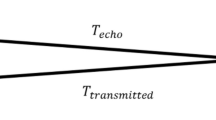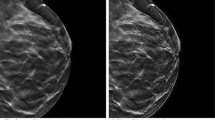Abstract
High level of uncertainty is always present due to impulsive noise in ultrasonic images, which may put negative effect on image interpretation, quantitative measurement and diagnostic purposes. In order to deal with this uncertainty, fuzzy modelling is being used which is very helpful in distinguishing noise from edges and other critical details present in the image. In this study, a novel fuzzy logic based non-local mean filter is proposed to model the speckle noise and to restore the degraded image using Fuzzy Uncertainty Modelling (FUM), smoothed by local statistic based information while preserving the image details for low and highly speckled ultrasound images. Proposed denoising technique acquires the local parameters to find distinct “similar and non-similar” non-local regions using FUM. These homogenous regions are first smoothed through local statistical information and then used to restore the selected noisy pixels using fuzzy logic based noise removal process. The study evaluates the performance of the proposed technique on different real and simulated data sets, and compares the numerical values with existing state of art filters using standard well known global quantitative measure like signal to noise ratio (SNR) and a local error measure – structural similarity index measure (SSIM). Visual and quantitative results demonstrate that the proposed technique outperforms the existing state of the art filters in removing speckle noise while preserving the edges and other important details present in the image.







Similar content being viewed by others
References
Abd-Elmoniem KZ, Youssef A, Kadah YM (2002) Real-time speckle reduction and coherence enhancement in ultrasound imaging via nonlinear anisotropic diffusion. IEEE Trans Biomed Eng 49(9):997–1014
Ambrosanio M, Baselice F, Ferraioli G, Pascazio V (2018) Ultrasound despeckling based on non local means. In: Eskola H, Väisänen O, Viik J, Hyttinen J (eds) EMBEC & NBC 2017. EMBEC 2017, NBC 2017. IFMBE Proceedings, vol. 65. Springer
Bamber JC, Dickinson RJ (1980) Ultrasonic B-scanning: a computer simulation. Phys Med Biol 25(3)
Baselice F (2017) Ultrasound Image Despeckling Based On Statistical Similarity. Ultrasound Med Biol, Elsevier 43(9):2065–2078
Binaee K, Hasanzadeh RPR (2011) A non local means method using fuzzy similarity criteria for restoration of ultrasound images. In: 7th Iranian Conference on Machine Vision and Image Processing (MVIP), Tehran, pp. 1–5
Buades A, Coll B, Morel J (2005) A non-local algorithm for image denoising. In: IEEE Computer Society Conference on Computer Vision and Pattern Recognition (CVPR'05), San Diego, vol. 2, pp. 60-65
Chen Y, Broschat SL, Flynn PJ (1996) Phase insensitive homomorphic image processing for speckle reduction. Ultrason Imaging 18(2):122–139
Coupe P, Hellier P, Kervrann C, Barillot C (2009) Nonlocal means-based speckle filtering for ultrasound images. IEEE Trans Image Process 18(10):2221–2229
Frost VS, Stiles JA, Shanmugan KS, Holtzman JC (1982) A Model for Radar Images and Its Application to Adaptive Digital Filtering of Multiplicative Noise. IEEE Trans Pattern Anal Mach Intell PAMI-4(2):157–166
Ghesu FC, Georgescu B, Zheng Y, Grbic S, Maier A, Hornegger J, Comaniciu D (2017) Multi-scale Deep Reinforcement Learning for Real-Time 3D-Landmark Detection in CT Scans. IEEE Transactions on Pattern Analysis and Machine Intelligence
Gonzalez RC, Woods RE (2004) Digital Image Process. Pearson Education (Singapore) Pte. Ltd, Delhi
Javed SG, Majid A, Lee YS (2017) Developing a bio-inspired multi-gene genetic programming based intelligent estimator to reduce speckle noise from ultrasound images. Multimedia Tools Appl
Jensen JA (1996) Field: a program for simulating ultrasound systems. Paper presented at the 10th Nordic-Baltic Conference on Biomedical Imaging
Jensen JA, Svendsen NB (1992) Calculation of pressure fields from arbitrarily shaped, apodized, and excited ultrasound transducers. IEEE Transactions on Ultrasonic, Ferroelectrics, and Frequency Control 39(2):262–267
Ker J, Wang L, Rao J, Lim T (2018) Deep Learning Applications in Medical Image Analysis. IEEE Access 6:9375–9389
Kim J, Hong J, Park H (2018) Prospects of deep learning for medical imaging. Precision and Future Medicine 2:37–52
Krissian K, Westin C, Kikinis R, Vosburgh KG (2007) Oriented Speckle Reducing Anisotropic Diffusion. IEEE Trans Image Process 16(5):1412–1424
Kuan DT, Sawchuk AA, Strand TC, Chavel P (1985) Adaptive Noise Smoothing Filter for Images with Signal-Dependent Noise. IEEE Trans Pattern Anal Mach Intell PAMI-7(2):165–177
Lan X, Ye M, Zhang S, Yuen PC (2018) Robust Collaborative Discriminative Learning for RGB-Infrared Tracking. In: AAAI Conference on Artificial Intelligence, North America. Date accessed: 21 Nov. 2018
Lan X, Yuen PC, Chellappa R (2017) Robust MIL-based feature template learning for object tracking. In: AAAI Conference on Artificial Intelligence, North America. Date accessed: 21 Nov. 2018
Lan X, Zhang S, Yuen PC, Chellappa R (2018) Learning Common and Feature-Specific Patterns: A Novel Multiple-Sparse-Representation-Based Tracker. IEEE Trans Image Process 27(4):2022–2037
Lee J (1980) Digital Image Enhancement and Noise Filtering by Use of Local Statistics. IEEE Trans Pattern Anal Mach Intell PAMI-2(2):165–168
Lu L, Zheng Y, Carneiro G, Yang L (2017) Deep learning and convolutional neural networks for medical image computing. Springer
Maier A, Syben C, Lasser T, Riess C (2018) A gentle introduction to deep learning in medical image processing. arXiv:1810.05401v1
Masood S, Hussain A, Arfan Jaffar M, Choi T-S (2014) Color differences based fuzzy filter for extremely corrupted color images. Appl Soft Comput 21:107–118, ISSN 1568-4946
Chaudary A, Khan A, Mirza AM, Ali A (2007) A Hybrid Image Restoration Approach: Using Fuzzy Punctual Kriging based Image Restoration. Int J Imaging Syst Technol 17(4):224–231
Nirschl JJ, Janowczyk A, Peyster EG, Frank R, Margulies KB, Feldman MD, Madabhushi A (2017) Deep learning tissue segmentation in cardiac histopathology images. In: Deep Learning for Medical Image Analysis, Elsevier, pp. 179–195
Sharif M, Ayyaz Hussain M, Arfan J, Choi T-S (2015) Fuzzy similarity based Non Local Means Filter for Rician Noise Removal. Multimed Tools Appl 74(15):5533–5556
Sharif M, Hussain A, Jaffar MA, Choi TS (2016) Fuzzy-based hybrid filter for rician noise removal. SIViP 12:215–224
Singh K, Ranade SK, Singh C (2017) A hybrid algorithm for speckle noise reduction of ultrasound images. Comput Methods Prog Biomed 148:55–69
Tay PC, Garson CD, Acton ST, Hossack JA (2010) Ultrasound Despeckling for Contrast Enhancement. IEEE Trans Image Process 19(7):1847–1860
Wang Z, Bovik AC, Sheikh HR, Simoncelli EP (2004) Image quality assessment: from error visibility to structural similarity. IEEE Trans Image Process 13(4):600–612
Wu J, Tang C (2014) Random-valued impulse noise removal using fuzzy weighted non-local means. Signal, Image Video Processing 8(2):349–355
Yang J, Fan J, Ai D, Wang X, Zheng Y, Tang S, Wang Y (2016) Local statistics and non-local mean filter for speckle noise reduction in medical ultrasound image. Neurocomputing 195:88–95
Yu Y, Acton ST (2002) Speckle reducing anisotropic diffusion. IEEE Trans Image Process 11(11):1260–1270
Zhang K, Zuo W, Chen Y, Meng D, Zhang L (2017) Beyond a Gaussian Denoiser: Residual Learning of Deep CNN for Image Denoising. IEEE Trans Image Process 26(7):3142–3155
Author information
Authors and Affiliations
Corresponding author
Additional information
Publisher’s note
Springer Nature remains neutral with regard to jurisdictional claims in published maps and institutional affiliations.
Rights and permissions
About this article
Cite this article
Nadeem, M., Hussain, A. & Munir, A. Fuzzy logic based computational model for speckle noise removal in ultrasound images. Multimed Tools Appl 78, 18531–18548 (2019). https://doi.org/10.1007/s11042-019-7221-4
Received:
Revised:
Accepted:
Published:
Issue Date:
DOI: https://doi.org/10.1007/s11042-019-7221-4




